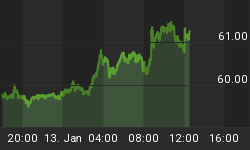Below is an excerpt from a commentary originally posted at www.speculative-investor.com on 18th June 2009.
In a semi-free country such as the US there are two prerequisites for a peace-time economic depression, where a depression is defined as a period of 5-10 years or longer of economic stagnation or outright contraction. The first is a massive expansion of credit based on fractional reserve banking (supported, nowadays, by a powerful central bank), and the second is a far-reaching attempt by the government to prevent the corrective process from running its natural course after the credit bubble has burst.
Although a massive expansion of credit is a necessary precondition for a depression, it isn't sufficient on its own. We know this because fractional reserve banking spiraled out of control on a few occasions during the 19th Century, but when the associated credit bubble inevitably burst the outcome was not a depression (in the above meaning of the term). For example, the bursting of a credit bubble in 1819 prompted a financial panic and severe economic downturn, but the economy had returned to its long-term growth path by 1821. Other 19th Century examples include the bursting of a credit bubble in 1839, which was followed by a one-third contraction of the money supply but no economic reversal of consequence (the economy continued to grow), and the bursting of a credit bubble in 1873, which led to a financial panic and sharp economic decline that was essentially complete by 1875.
During the 19th Century the US Federal Government did comparatively little in response to the occasional financial crisis, and this is almost certainly why the crises did not evolve into depressions. Furthermore, the idea that the government should generally take a 'hands off' approach to the economy continued to hold sway during the first quarter of the 20th Century. For example, the economic contraction of 1920-1921, a reaction to the bursting of the war-related credit bubble, was at least as severe as the post-1929 contraction for a while, but by 1922 the US economy was again powering ahead. The Federal Government's response to the rapid economic decline of 1920-1921 was to reduce taxes and CUT government spending, an approach that worked wonderfully well and yet one that would be anathema to today's political elite. Refer to the article at http://www.lewrockwell.com/orig4/powell-jim4.html for more information on the events of that period.
The big difference during the 1930s was that almost as soon as the stock market crashed the Federal Government began to ramp-up its involvement in the economy in an effort to stem the tide. Government spending and taxes were boosted, policies designed to prop-up prices were put in place, other policies were implemented to restrict production and work practices, unsound businesses were supported, and a veritable flood of new regulations flowed from Washington. What should have been a severe 2-3 year economic downturn was thus transformed into the "Great Depression".
The credit bubble that burst in 2007 was much bigger than any of its predecessors, but the US could probably still have escaped with a painful 2-year economic contraction had the US Government acted decisively to REDUCE the burden it places on the economy. Instead, the Bush Administration intervened with great speed in a hopelessly misguided effort to curtail the corrective process made necessary by the bubble, and the extent of government intervention has since exploded under the Obama Administration. It is therefore fair to say that the mistakes of the 1930s are not only being repeated, they are being magnified.
An economic depression of the inflationary kind now appears to be locked in place because a complete reversal of government policy is not a realistic possibility. Just like a secular bear market the depression won't proceed in a straight line (there will be failed attempts to rebound along the way), but it will proceed.
We aren't offering a free trial subscription at this time, but free samples of our work (excerpts from our regular commentaries) can be viewed at: http://www.speculative-investor.com/new/freesamples.html.
















